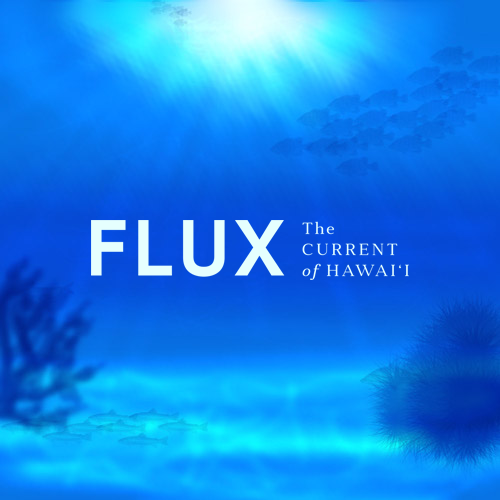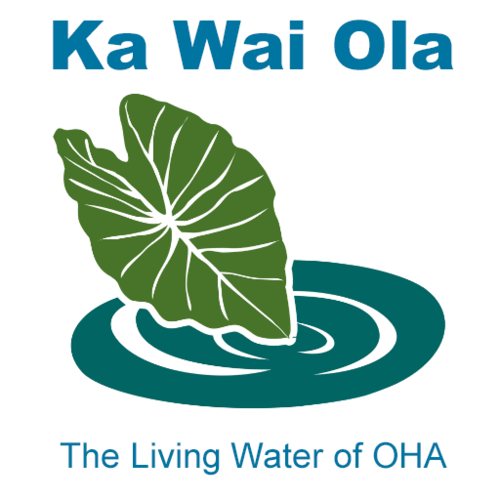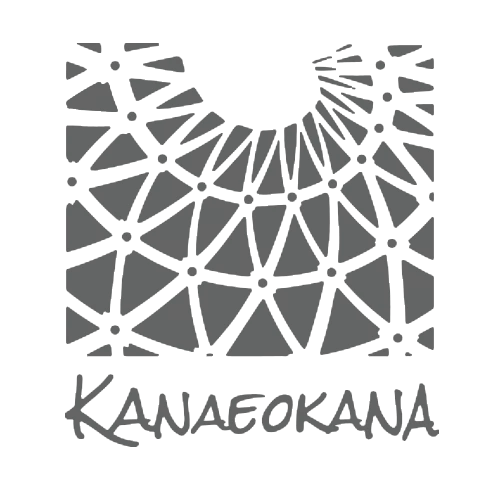Although Wong-Kalu was fortunate to learn the mo‘olelo when she was 18, a narrative integral to her own journey as māhū, many other Hawaiians, locals, and malihini remain unaware to the stones at the heart of Waikīkī. For this reason, Wong-Kalu and filmmakers and life partners Dean Hamer and Joe Wilson produced Kapaemahu, an animated retelling of the mo‘olelo told in the Ni‘ihau dialect that was most likely spoken by the māhū healers. Through the artistry of animator Daniel Sousa, the film is bathed in earthy colors and told through soft and unadorned figures, modesties which underscore the magic of the narrative. “Dean, Hina, and I all emerged in a society that was not only negative but cast aspersions toward people like us that made our walk even more difficult,” Wilson explains. “When we learned about this site, these stones, and the story it reflects, we saw the potential it had to be one of those amazingly powerful symbols, not just for people in Hawai‘i but for people who visit Hawai‘i, who could start to see a place for themselves in the world through this mo‘olelo and site that celebrates this aspect of life.”
Four Stones Sit in Waikiki. Their Story? Unknown to Most Who Pass By
On the side of Kuhio Avenue in Waikiki, four stones sit behind a black fence. Thousands of people pass them every day. “But those people, very few of them know the true story about what the stones represent,” Bishop Museum Historian and Archives Curator DeSoto Brown said. “They are called the healer stones of Kapaemahu.”
The mission of SFO Museum, a division of San Francisco International Airport, is to delight, engage, and inspire a global audience with innovative programming, and to provide visibility to a range of contemporary artists and filmmakers who are at the leading edge of their craft. In Kapaemahu, the story of four extraordinary beings of dual male and female spirits from Tahiti, filmmakers Hinaleimoana Wong-Kalu, Dean Hamer, and Joe Wilson reveal how these beings passed their healing arts to the people of Hawai’i. On display in the Departures Level 3, Gallery 4E Sep 29, 2022 - Nov 02, 2022.
Honolulu Magazine includes the Kapaemahu children's book in this list of stories, poems and plays that reflect experiences deeply rooted in our Island home. Published by Penguin Random House's Kokila Books, you can find at Native Books Hawaii and Na Mea Hawaii in Honolulu, online, and just about everywhere books are sold.
Signage at the Kapaemahu monument in Waikīkī fails to mention that the stones represent four māhū who brought healing arts to Hawaiʻi. Kuhio Lewis, CEO of the Council for Native Hawaiian Advancement, said: “When any part of our past is erased, for whatever reason, future possibilities are removed. It is time to assure that our public monuments in Hawaiʻi, including the stones of Kapaemahu, are a site of inspiration and opportunity for the next generation.”
In the 1960s when a Waikiki bowling alley was demolished to create more beach, four large boulders were unearthed at the site near where they had been erected to honor four Tahitian healers. A historical plaque was erected at the stones, which date back more than 500 years and are protected by a fenced enclosure near the Honolulu Police Department substation in Waikiki. But the version of history that recognized these healers as mahu, someone of dual male and female spirit, remained buried even in 1997 when the monument’s signage was last updated. Some members of the community have asked the city to consider revising the monument’s signage or adding a QR code to provide more information about the mahu aspect of the stones for those who are interested. The movement is an outgrowth of “The Healer Stones of Kapaemahu,” an exhibit at Bishop Museum that runs through Oct. 16.
Children’s Book Tells Legend of Kapaemahu Monument about Sacred Stones and Mahu Healers
The book, just released, is the first-ever U.S. publication in both English and Olelo Niihau, the Niihau dialect of Hawaiian, said co-author Hinaleimoana Wong-Kalu. Identifying herself as “mahu” or transgender, she is a Native Hawaiian teacher, filmmaker and an activist for gender minorities. Her co-authors include Dean Hamer and his husband, Joe Wilson, both Emmy Award-winning filmmakers, who have collaborated with Wong-Kalu to make five films on transgender people and society’s outsiders. The book is based on their latest film, “Kapaemahu,” released in 2020 and shortlisted for a 2021 Oscar. It is illustrated by Daniel Sousa, an Academy Award-nominated animator.
Pacific Connections: Gender Diversity Across Moana Nui – Kapaemahu Speaker Series
History Revealed, History UnErased, Truthful History, Empowering and Compassionate History, Living History - just a few of the framings that come to mind regarding the powerful presentations of groundbreaking scholars Tēvita O. Ka'ili and Adam Keawe Manalo-Camp, who shared their manaʻo as part of the Kapaemahu Speaker Series at the Bernice Pauahi Bishop Museum. Video available now.
Kanaeokana - a network of 80 Hawaiian culture, ʻōlelo and ʻāina-based schools (preschool-university) and community organizations - has unveiled a Kapaemahu Activity Book. Created by teachers for teachers, the activity book is part of Kanaeokana's efforts to develop and share educational resources that support the Hawaiian education system. The Kapaemahu Project creators hope the book will also serve as a guide to help perpetuate the enduring legacy of The Healer Stones of Kapaemahu.
Hidden in Plain Sight: The History of The Healer Stones of Kapaemahu in a Changing Waikīkī
As part of the speaker series based on the themes of Bishop Museum's newest exhibition - "The Healer Stones of Kapaemahu" - this first conversation delves into the historical findings and artistic choices of the curators, including details about the first written version of the moʻolelo, its loss, its rediscovery deep in a library archive, and its restoration — all in the context of the rise of tourism, militarization, and the erosion of Hawaiian cultural identity throughout the 20th century.









